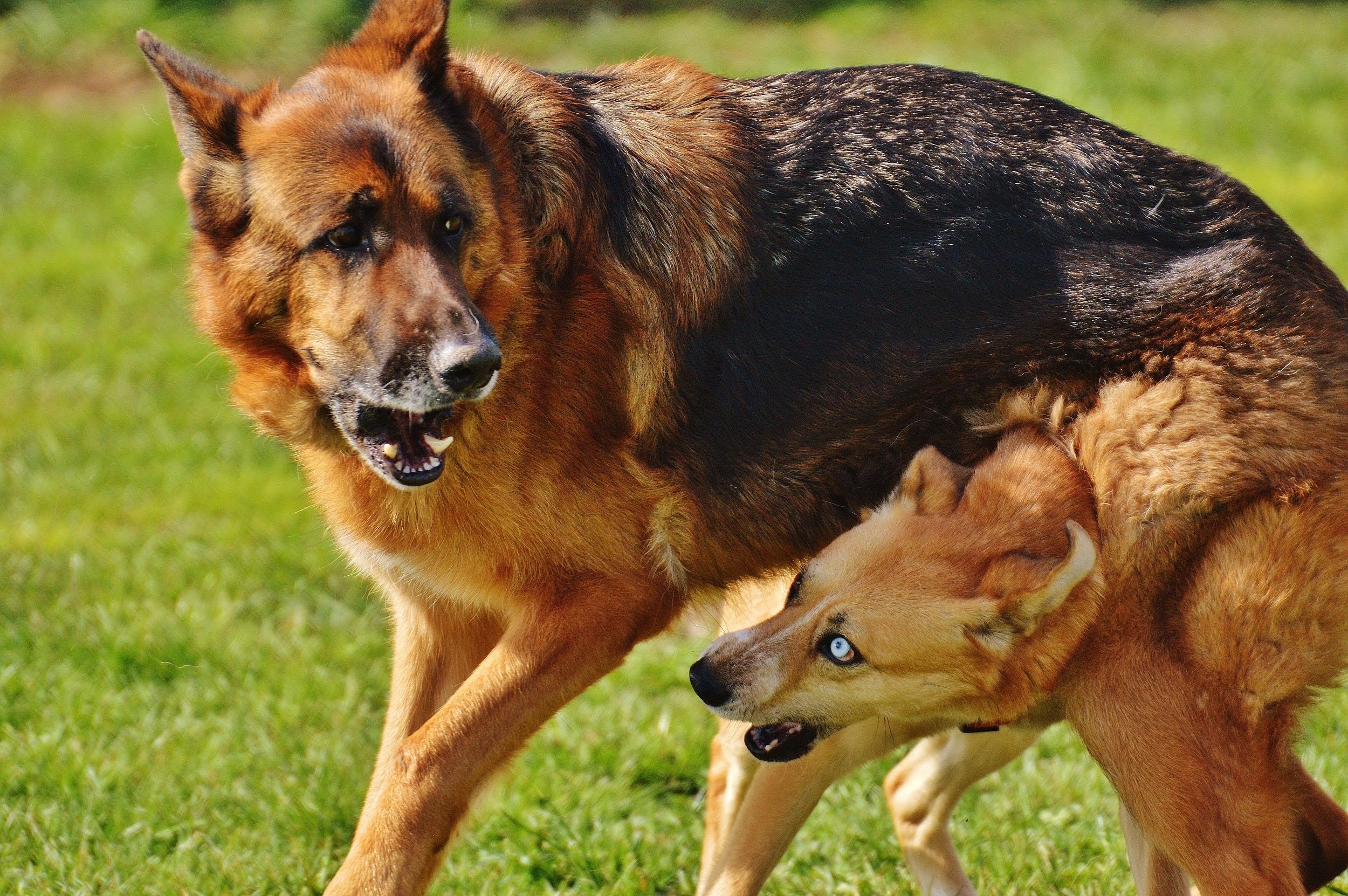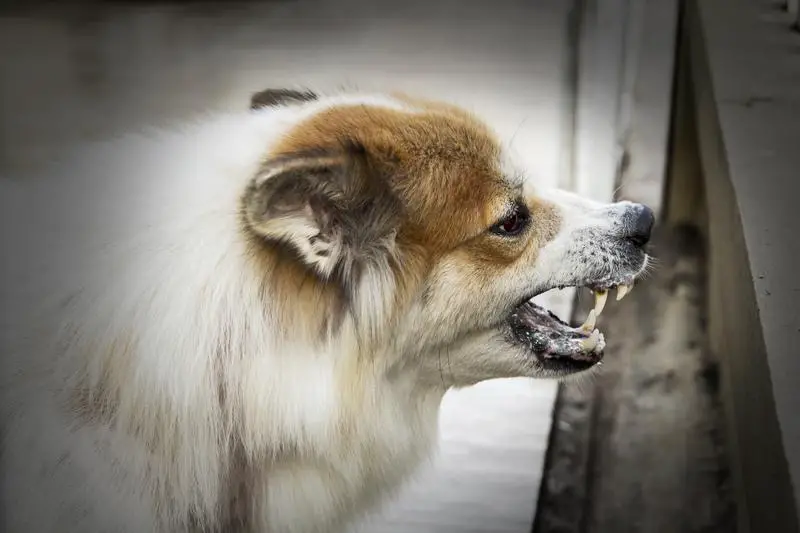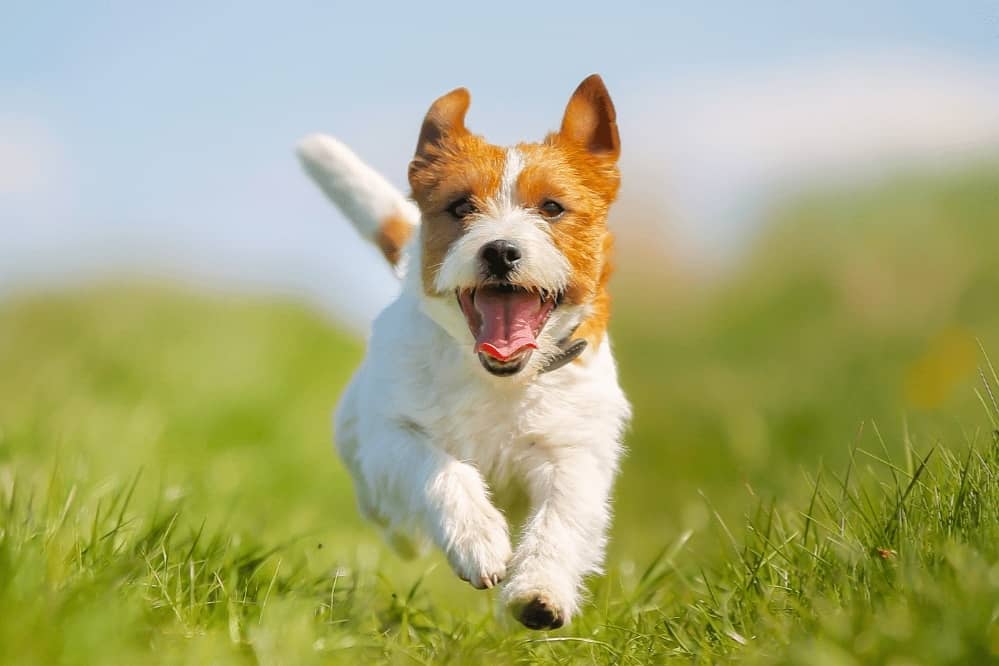Unlike people, dogs do not exactly talk. Though they do communicate vocally in many other ways (listed below), their primary method of communication is done visually. In fact, some would say dogs can tell you in a fraction of a second just by looking at them what it could take some people hours! Our dogs are always communicating with us.
Understanding Dog Body Language: Visual Cues
Through the combined use of their tails, ears, eyes, stance and stature, even fur, dogs communicate their state of minds immediately, forgoing cumbersome human speech. Not only can an owner tell when their dog is feeling happy, sad, excited, anxious, uneasy, aggressive and confrontational or even scared and nervous. Almost all confrontations, dog attacks or bites can be avoided if owners learn to read their dog’s visual cues.
Tail position:
When you were a child, you probably thought a wagging tail always meant a dog is happy. In reality, both the rate of the tail wag and the tail height can be a prelude to aggression just as easily as that rapid giddy excitement.
To a dog, tails are kind of like an antennas, very quickly sending signals and probably the very first thing most people (and dogs) see. For those that pay attention, a dog’s emotional state is usually pretty easy to read.
Tail wagging rapidly:
Dog is happy and excited. Dog may be even wag half of the body along with its tail.
Tail tucked between legs or held low:
Dog is likely feeling nervous, threatened or otherwise inadequate.
Tail held straight out, slow ‘half wag:
Can indicate potential aggression.
Tail held high, pointed skyward:
Dog is displaying confidence, dominance and security.
Children especially can easily confuse aggressive intentions with happy ones. If you see a strange dog wagging his tail in a highly held and slow arc, it is best to be cautious.
Ear Position:
Dogs can tilt,turn,raise and lower their ears. However, not all breed of dogs have the same range of different motions of ears. An example would be, floppy ears of hound do not have the same range of ear movement compared to those pointy ears of a Spitz type breed but even with the limited range of movement hounds can move the base of their ears. This movement serves two functions, both funneling sound waves and augmenting a dog’s considerable tracking abilities as well as conveying emotion.
Ears straight up, pointed toward the sky: Indicates alertness, focus and attentiveness.
Ears held backward, flat against forehead: Can indicate submission, anxiety, discomfort and ear.
Stance And Stature:
Like tail position, a dog’s body positioning can be a huge indication of the dog’s feelings or even be a prelude to actions he is about to take. For example, most people can tell the difference between a dominant, confident dog, a playful dog and a fearful or injured animal immediately, just by stature alone (though there will always be other signals).
Dog ‘Bow’, accompanied by general eye contact: Can mean excitement and playfulness.
Crouched body posture: Submissive or injured/frightened dogs will attempt to make themselves seem as small and non-threatening as possible.
Rolling over, exposing belly: Dogs will often expose vulnerable areas, such as their belly and neck, as a way of signaling ‘submission’ to both humans and other dogs.
Tall, straight, rigid body posture: Can indicate security, confidence and dominance.
Tall, rigid & slightly forward posture: Can mean the dog is preparing to charge at something or run forward, could but does not always indicate aggressive intentions.
Understanding Aggression Through Body Language:

Even in this split second capture, you can see the signals. Notice how the larger dog’s ears stand straight up, while the smaller head dog’s ears rest lower against his forehead.
To the untrained viewer, both of these animals will look equally aggressive. Both are probably going to be growling and baring their fangs but there is a drastic differences in body language.
The dominant aggressive animal will be looking straight in the eye. His stance will be tall, rigid and strong. His tail will likely either be standing straight up or pointed straight rearward. He will bearing his teeth, lips curled in preparation for a bite. This dog is ‘probably’ trying to tell you ‘This is My area. I don’t want you here. Get out Now!’
The submissive aggressive animal will probably be growling and bearing his fangs too, lips curled in preparation to bite, although his mouth will likely take a more ‘scrunched’ look. His body will be lower, back bent and tail either tucked or lower to the ground, though it can be straight out also. His ears will not stand up straight but likely be lower and rearward on his forehead. He likely will not be looking directly in the eyes but maintaining a sort of ‘sideways’ gaze.
Dogs will usually try to avoid direct eye contact with those they see as dominant or higher up in their ‘pack’ family hierarchal structure.
What are ‘Hackles’?
A strip of fur called dog’s hackles on a dog’s back will sometimes stand up when it is agitated. If you look at Grey wolves, their entire coats will stick straight out when they are feeling confrontational (can mean mock aggression or play also) making them look much larger and more intimidating than normal. Though it is a mere shadow of his predecessor, dog hackles are evidence of evolution.
Notice how the light colored wolves’ entire coat seems to stick straight out rather than a simple strip of fur on his back (like a dog). Also, see how the darker colored animal is lying on his back, exposing his neck and belly to the light colored wolf. Though the light colored wolf may look very frightening and dangerous, there will be no physical confrontation here and the darker animal is safe.
Can you tell what the dog below is thinking?

The dog is probably feeling nervous, and wants either to be left alone or whatever it is looking at to leave its area.This dog could react unpredictably and there is a good chance he could bite in defense.
Importance of understanding dog body language
Strong Bond With Your Dog:
Understanding what your dog is saying is crucial to having a healthy relationship with your canine friend. Your dog will trust you more when you response appropriately to their need and emotional state.
Dogs are often put into unnecessary stress when we miss the vital visual clues shown by the dogs. But if you are able to recognize these clues you can take actions to prevent health and behavioral problems that are caused by stress.
Other advantage of understanding dog body language is that you become better equip to make right decision for your dog. You are in better position to assess the situation and create coping environment for the dog.
Safe Environment
Understanding dog body language can prevent potential dog bites.Your dog might be in a emotional state where it feels that it has no other option than to bite.Dog bites can be dangerous and can also have legal and financial consequences for you if your dog bites your neighbors or strangers. Dogs are also put down if they have biting history.Being able to read dog body language will help you to recognize precursors of aggressive behavior. You can then distract your dog or redirect the dog away from the situation.

